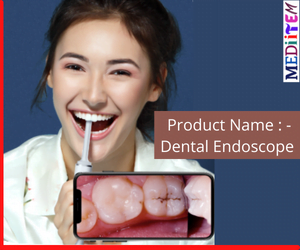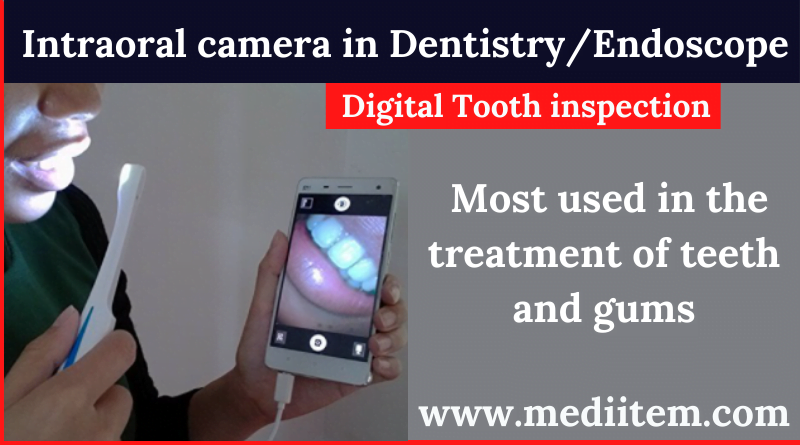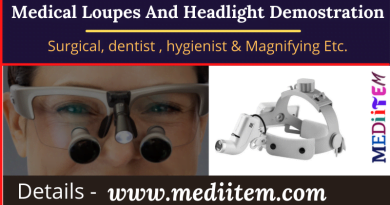Mouth inspection dental endoscope Intraoral camera in dentistry

Name = Dental Endoscope VV Wireless
- Android support ,, intraoral camera ,,, Wifi,,,, HD video ,,, 8 led lights,,,
Generally, this traditional system is annoying and cumbersome for the patient and sometimes results are obtained with errors in the emptying and printing of the molds since it is not as precise as the intraoral scanner.
Therefore we can assure you that working with this device is a predictable, clean, and very comfortable option, also with an improvement in adjustments and aesthetics.
Likewise, the patient can see their entire oral cavity scanned on the computer, in just a few minutes, and the dentist will be able to better explain the diagnosis and treatment options available. Prostheses, aligners… are designed and manufactured with the computer.
The intraoral scanner is an electronic device that has the latest 3D technology. It allows us to reproduce 3D images of the structures of our patient’s oral cavity, thus allowing us to generate a digital file of it to be able to work on it. In this way, it will no longer be necessary to use the traditional system of taking measurements of the patient’s mouth with the pastes used in the clinic, whether silicone or alginate, plaster or cast; when carrying out prosthetic work on teeth or implants, etc.
What is an intraoral camera?
The intraoral camera or scanner is a digital device that allows taking photos of the inside of a patient’s oral cavity in real-time. Thanks to its size and improvements in the resolution of the prints, it allows us to obtain close-ups of the mouth. With a conventional camera, it would be impossible to achieve.
The 3D intraoral scanner has become a very useful tool when it comes to showing the patient the details of the inside of their mouth. The cameras allow the dentist to explain the diagnosis and treatment in detail. You can be aware of the state of your oral health and its possibility of improvement before starting a procedure.
What is it for?
It is regularly used to perform Smile Design, whether in Orthodontic or Prosthetic treatments. The treatments in which Intraoral Scanning is used are:
*Lingual Orthodontics
*Invisible Aligners
*Scale
*Veneers
*Fixed Prostheses on teeth and Implants
*Removable Prostheses
Benefits of the intraoral scanner
The use of this scanner has benefits both for you as a patient and for us because it makes our work enormously easier.
First of all, for you. The use of this technology prevents us from having to take the classic impressions with molds and a paste that, at times, causes nausea and a feeling of suffocation.
But, also, it is very useful for us. The use of this technique allows digital impressions to be sent directly to the manufacturers.
And in this way we save time. The manufacturing process begins much earlier since we do not send the molds physically, but rather we send all the information via telematics.
It is an extremely precise system. Being such an exact method we avoid the margin of error that could occur when we take the sample with the traditional mold and have to carry out new impressions, touch-ups, or adjustments.
How does intraoral scanner technology work?
Until now, the traditional system for representing the patient’s oral cavity was to make dental impressions with materials such as alginate or silicones, which caused discomfort to the patient such as the gag reflex or the bad taste of the materials. In addition, they require more work time, can cause errors or instability of the impression, lacerations in the margins, and require casting with plaster.
Nowadays, the digital workflow in clinics is increasingly common and the use of the intraoral scanner has simplified the design of models, therefore, the performance of prosthetic or orthodontic treatments requires less work time compared to the traditional model of impression taking.
Therefore, the process will be faster, more pleasant, and more comfortable for the patient. Probably the most convincing advantage is that the processes are more efficient and reduce treatment times.
What treatments do we use the scanner for?
The scanner is very useful for multiple treatments. Through this three-dimensional scan, we can see what the real situation of your mouth is like when you arrive at our office and decide which is the most appropriate treatment.
Thanks to it, we will obtain a complete record of your mouth to establish the starting point of the procedure.
3 are the most common treatments:
*Smile designs in orthodontic treatments. With this tool, imperfections that need correction-alignment are observed in real time.
*Treatments for traditional braces, hidden lingual braces, and invisible aligners.
*Partial prostheses, fixed prostheses on teeth and implants, relief splints, inlays… in short, any treatment that requires measurements to be manufactured by the dental laboratory.
Types of intraoral scanners
Depending on their operation, there are two types of scanners:
Those with photographic technology: capture individual images of the areas to be scanned, which are transformed into the 3D digital model that we see on the monitor.
Those with video technology: in this case, the scanned areas are recorded on video and the viewing process is the same.
What are the advantages of the intraoral scanner?
The process is faster, more pleasant, and comfortable for the patient. However, the advantage that we highlight the most is the greater efficiency of the impression of the oral cavity and the reduction of treatment times.
In addition to these advantages, we add these others:
*The digital models we obtain are very reliable and highly accurate. So much so, that with the intraoral scanner, we can obtain captures of both the natural teeth and the implants.
*Defects can be corrected instantly.
*The 3D files generated are stored digitally and we save the physical space that plaster or plaster models previously occupied.
*Shipping to the laboratory is immediate, which speeds up the process.
*The patient will be able to see more simply the real state of his mouth if there are overlapping teeth, spaces between teeth, fractures, or cracks.
In general terms, we summarize by saying that the intraoral scanner simplifies the process of obtaining oral models, facilitates diagnosis, and improves the effectiveness of the results.
Advantages of using HD intraoral camera: Revolution in dentistry
Advantages of using an HD intraoral camera:
The incorporation of high-definition technologies in the dental field has revolutionized the way oral health professionals perform their procedures. Using an HD intraoral camera offers several advantages ranging from more accurate diagnosis to patient education. But what exactly is an HD intraoral camera and how does it benefit dentists and patients alike?
An HD intraoral camera is a small device, often the size of a pen, used to capture high-resolution images of the inside of the mouth. This allows dentists to detect problems that might go unnoticed by the naked eye and more effectively explain procedures and treatments to patients.
More accurate diagnosis with HD intraoral camera:
One of the biggest benefits of using the HD intraoral camera is the ability to make a more accurate diagnosis. With high-resolution images, dentists can detect problems such as cavities, fractures, and gum disease in the early stages.
Greater patient understanding:
Using an HD intraoral camera allows patients to see what the dentist sees. This provides a clearer view of your oral health situation and helps you better understand the proposed procedures and treatments.
The visual record of the evolution of the treatment:
With the HD intraoral camera, dentists can keep a visual record of a patient’s treatment progress. This allows images to be compared over time to see how the patient is responding to the treatment.
Time savings and convenience:
HD intraoral cameras also save time for both dentists and patients. The dentist can capture quick, clear images without causing discomfort to the patient, and these images can be shared with other professionals or with the patient in real time.
Ease of use and versatility:
HD intraoral cameras are easy to use and very versatile. They can be used to take images of any part of the mouth, and are useful for a variety of dental procedures.
Implementation of HD intraoral camera in dental practice:
The use of the HD intraoral camera in dental practice has transformed the way professionals work. It not only improves diagnostic accuracy but also optimizes communication between dentist and patient.
Improvement in the diagnostic process:
With the help of the HD intraoral camera, dentists can detect early problems that might be difficult to see with the naked eye. Therefore, the HD intraoral camera plays a crucial role in the dental diagnosis process.
Greater patient involvement:
By providing clear and detailed images, the HD intraoral camera helps patients better understand their dental condition. This patient involvement can lead to better adherence to treatment.
Better communication between professionals:
HD intraoral cameras also facilitate communication between oral health professionals. High-resolution images can be shared and discussed with other dentists and specialists, helping to provide more comprehensive care.
Advances in HD intraoral camera technology
HD intraoral camera technology doesn’t stop. Recent advances in this technology are taking dentistry to new levels, offering even more benefits for dentists and patients.
Improved image quality:
The new HD intraoral cameras have higher resolution, providing even sharper and more detailed images. This further improves dentists’ ability to detect problems and make accurate diagnoses.
Integration with other dental technologies:
Some HD intraoral cameras are being integrated with other dental technologies, such as practice management software and 3D printers. This allows for more efficient workflow and better patient care.
Wireless HD intraoral cameras:
Wireless HD intraoral cameras offer more flexibility and convenience for both dentist and patient. They allow greater mobility and eliminate the need for cables.
New technologies in dentistry:
In dentistry, like other branches of medicine, new technologies constantly appear that revolutionize techniques and methods to treat patients more efficiently. Below we mention new technologies that are in continuous development in the dentistry sector.
New technologies and the latest advances in dentistry intraoral camera:
Intraoral cameras were created in 1980. They are shaped like a magic wand and their objective is to project an enlarged image of the mouth on a screen. In this way, a study or analysis of the patient can be given, through a live photo that the dentist can see instantly.
These equipment have been on the market for several years, however, they had not been taken into account by dental professionals, since many preferred to trust their traditional techniques rather than new technologies that will revolutionize the study.
Digital x-ray:
X-rays are well known in almost any branch of medicine, but in the case of medicine, very few specialists used them because there was a study that determined that the radiation levels were too high to do it on patients.
However, nowadays it is not at all dangerous to use it, and, many specialists use it thanks to the fact that the image transmitted is very sharp, everything can be seen clearly, and in addition to obtaining a study of the patient’s mouth immediately.
Laser:
The laser is a tool that is commonly used in medicine because it allows you to work on specific areas in a cleaner and faster way, however, in medicine, it was in 2021 that it began to be used, since it is quite useful for working in the gingival tissues, as well as performing the respective periodontal treatments. , with notable benefits such as avoiding excessive inflammation and bleeding.
Dental CT:
Dental CT (known as cone beam computed axial tomography) has the most modern technologies in dental medicine, being very efficient in implant treatments.
One of its benefits is that it is done in a few seconds, saving the patient from having to undergo a series of tests to be treated for a dental condition.
Dental artificial intelligence:
Finally, we have one of the most important technologies that is in full development but is already available in certain dental equipment. This is artificial intelligence, also known as AI.
It is a kind of awareness or guide that the teams have to be able to detect, analyze, and learn new things as they operate, to correct mistakes and not make them again.
At the moment it is in development, but it is expected that in the coming years, AI will be the most innovative invention in the world in the different branches of medicine.
FAQs for dental endoscope Intraoral camera
How does an HD intraoral camera help dentists make more accurate diagnoses?
An HD intraoral camera provides detailed, high-resolution images of the inside of your mouth. This allows dentists to see details that might go unnoticed by the naked eye and detect problems at an early stage.
What advantages does an HD intraoral camera have for patients?
An HD intraoral camera allows patients to see the inside of their mouth just as the dentist sees it. This helps patients better understand their dental condition and the proposed treatments.
Are HD intraoral cameras safe?
Yes, HD intraoral cameras are safe to use. They do not emit radiation and are simply a tool for capturing images.
Are HD intraoral cameras painful for the patient?
No, HD intraoral cameras are completely painless. They are small and are gently inserted into the mouth to capture images.
Are HD intraoral cameras used in all dental procedures?
Although not used in all procedures, HD intraoral cameras are a useful tool for a variety of dental procedures, from routine checkups to more complex treatments.
Can an HD intraoral camera replace dental X-rays?
Although HD intraoral cameras provide highly detailed images, they cannot completely replace dental X-rays, which are necessary to view the internal structures of the teeth and gums.
Uses of the intraoral scanner
This scanner is used to diagnose and plan treatments and for smile designs. It is also used for orthodontic treatments, making over-teeth prostheses and over-implants with the computer, bruxism splints, veneers…
It allows us to observe imperfections and malposition of teeth, fillings, etc. in real time that need correction and also see in real-time the end of orthodontic treatment and design and print invisible aligners (such as Invisalign aligners) by computer.
The intraoral scanner in orthodontic treatments
This device is used in orthodontic treatments, both in lingual braces and in invisible orthodontics or invisible aligners.
The intraoral scanner is used in dental prosthetics
The intraoral scanner is also used to design both fixed and removable dental prostheses, it is also used in inlays and veneers.
***(Dental Operating Microscope)
Read More: All Medical Equipment List
Please subscribe to my channel and follow
YouTube



